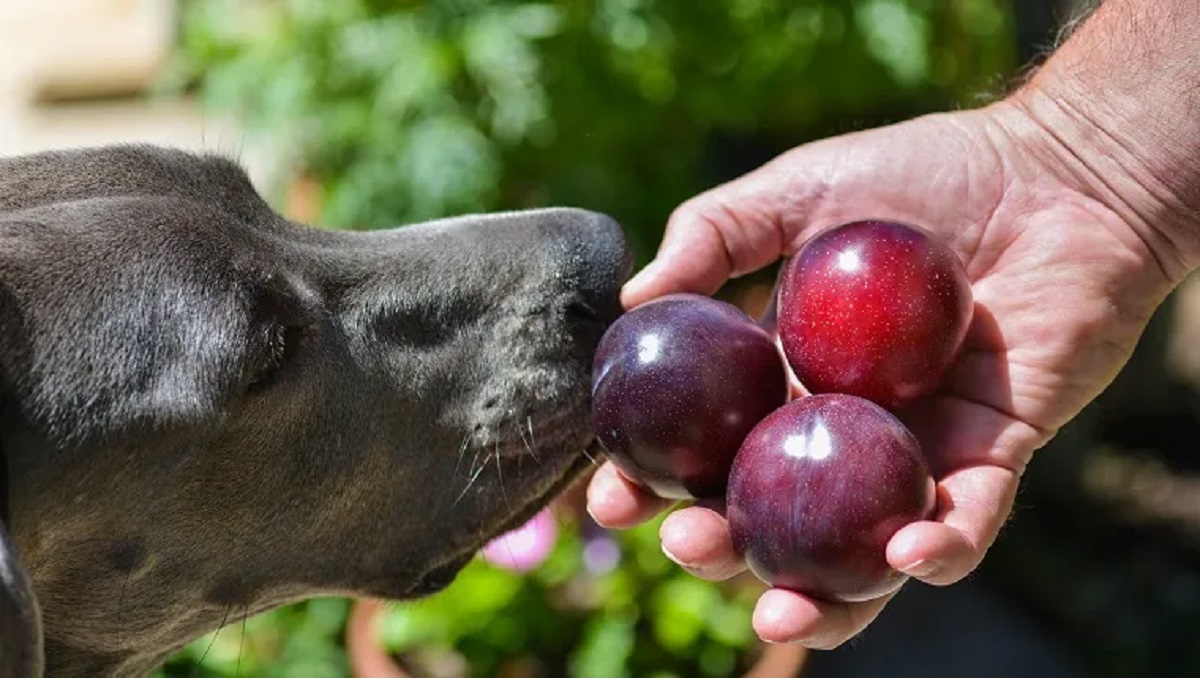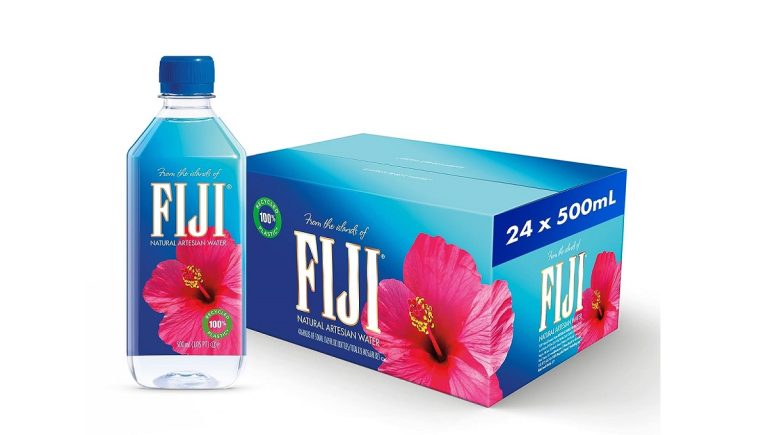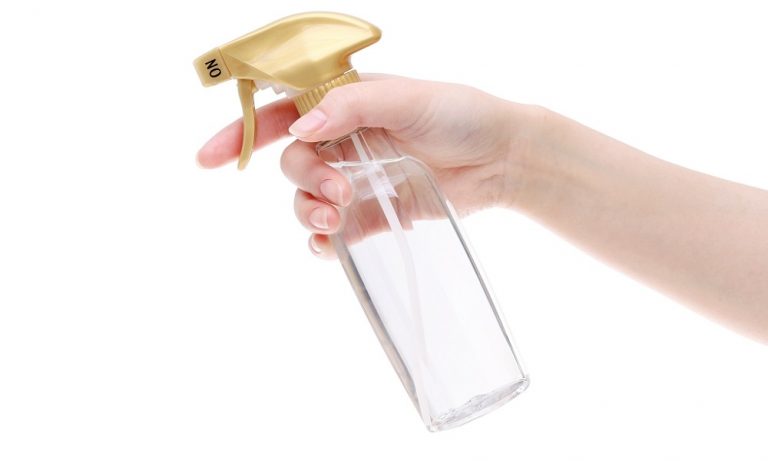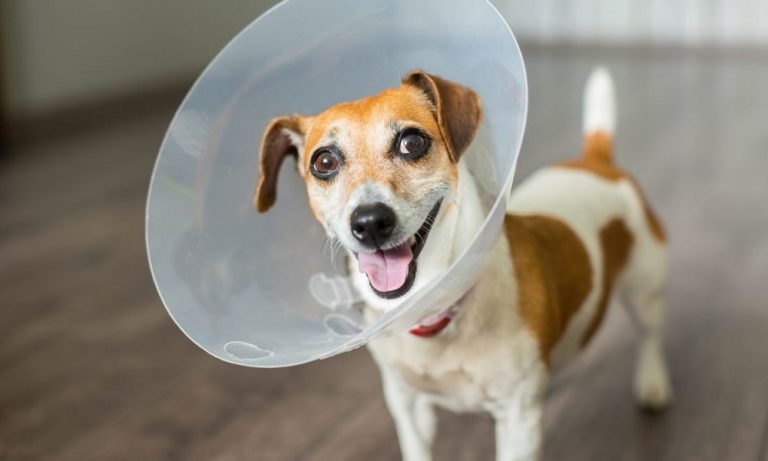What to Do If My Dog Ate a Plum Seed?
If your dog ate a plum seed, contact your veterinarian immediately. Plum seeds contain cyanide, which can be toxic to dogs. Understanding the potential dangers your pets face from seemingly harmless household items is crucial for their wellbeing.
Plum seeds, although small, can pose a significant health risk to dogs. These pits not only present a choking hazard but also contain cyanide, a toxic compound that can lead to serious health issues if ingested.
As a dog owner, being aware of the foods that are safe for your canine companion is essential to ensure their safety and health. With this knowledge, you can take quick action should an incident occur, like your dog consuming a plum seed, and you’ll also have the insight to better protect your pet from similar risks in the future.
Recognizing symptoms of cyanide poisoning, such as difficulty breathing, dilated pupils, and shock, can be life-saving. Always keep your vet’s contact details handy for emergencies.
Identifying The Issue
Discovering your dog has eaten a plum seed can be alarming. It’s essential to recognize the risks and symptoms promptly. Identifying the issue quickly is critical for your dog’s health. Let’s discuss what signs to look out for if your furry friend has ingested a plum pit.
Symptoms Of Ingesting Plum Pits
Plum seeds contain cyanide, which is toxic to dogs. Watch for these signals:
- Difficulty breathing: Look for heavy panting or wheezing.
- Vomiting: Your dog may try to expel the plum pit.
- Diarrhea: Keep an eye on any changes in bowel movements.
- Lethargy: A sudden lack of energy can be a telling sign.
- Loss of appetite: Take note if your dog refuses food.
- Dilated pupils: This may be a reaction to the cyanide.
Importance Of Acting Quickly
Immediate action can prevent serious complications. Here’s why speed is key:
- Cyanide toxicity can escalate rapidly without treatment.
- Blockages from the pit could occur in your dog’s digestive tract.
- Professional help is essential for a proper diagnosis and care.
Time is of the essence. Don’t delay in consulting with a vet if you notice these symptoms.
Immediate Steps
The moment you discover your dog has ingested a plum seed, quick action is crucial. While plums can be a tasty treat for humans, their seeds pose serious health risks to our four-legged friends. Immediate measures can limit any potential danger to your dog’s health. Follow these critical first steps without delay.
Contacting A Veterinarian
Contact your vet immediately after your dog eats a plum seed. If it’s outside regular hours, reach out to an emergency animal hospital. Be ready to answer questions about your dog’s size, the number of seeds ingested, and any symptoms displayed.
This information will help the vet determine the urgency and the right course of action, which may include inducing vomiting or more advanced treatment.
Monitoring The Dog’s Behavior
After alerting a veterinarian, keep a close eye on your dog’s behavior. Signs of distress to watch for include vomiting, diarrhea, lack of appetite, and unusual lethargy.
Note the time the seed was ingested and any change in behavior. Share these observations with the vet, as they can provide vital insights into your dog’s condition.
Potential Risks
If your furry friend sneaks a plum seed, it’s time for quick thinking. Plum seeds carry risks that may affect your dog’s health. Knowing what these dangers are can save you both from a lot of trouble.
Risk Of Intestinal Blockage
Plum seeds can be big trouble when they end up in a small dog’s belly. Like a square peg in a round hole, they don’t fit. A blocked gut is bad news—it means your pup can’t digest food right.
- Vomiting
- Loss of appetite
- Pain in the belly
- Constipation or trouble pooping
Any of these signs mean a vet visit is in order. Time matters, so do it fast. The vet might need to use x-rays to see the seed. Sometimes, surgery is the only option to get it out.
Toxicity Concerns
Plum seeds aren’t just a choking hazard; they are secretly poisonous. They pack cyanide, a toxic chemical. A little bit might just upset your dog’s stomach. A lot could be deadly.
| Signs of Cyanide Poisoning: |
|---|
| Drooling |
| Watery eyes |
| Hard time breathing |
| Beating heart races |
Spot these signs? Get help right away! Your vet can give the care your dog needs to fight the poison.
Home Care
Discovering that your furry friend has ingested a plum seed can be alarming. The ‘Home Care’ section is intended to guide you through immediate steps to take in response to such a situation. The priority is keeping your dog safe while awaiting professional advice or care.
Inducing Vomiting (if Advised By The Vet)
Act promptly but safely if your vet recommends inducing vomiting. Time is critical. Gather materials such as hydrogen peroxide, a syringe or turkey baster, and follow these steps:
- Prepare a 3% hydrogen peroxide solution.
- Fill the syringe or baster with the correct dosage (as instructed by your vet).
- Dispense it gently into your dog’s back of the mouth.
- Monitor your dog for vomiting.
- Keep track of the outcome and report back to your vet.
Remember, only induce vomiting if advised by a professional veterinarian.
Providing A Safe Environment
Creating a stress-free area for your pet is essential during this time. Follow these tips:
- Remove any hazards that could harm a disoriented pet.
- Make water accessible to prevent dehydration.
- Keep a close eye on your pet to monitor behavior.
- Place comfortable bedding in a quiet area for rest.
All these steps will support your dog’s recovery and safeguard them from further discomfort or danger.
Preventive Measures
Every dog owner knows that keeping their furry friend safe is a top priority. Plum pits can be dangerous for dogs if ingested. Let’s explore how to prevent such incidents and ensure your dog remains healthy and happy.
Avoiding Exposure To Plum Pits
Ensuring your dog stays clear of plum pits starts with vigilant management of your environment. Here’s what you can do:
- Secure all fruit bowls: Keep them out of reach to prevent accidental access.
- Inspect your yard: Remove fallen plums promptly.
- Discuss with household members: Make sure everyone knows the risks.
Training And Supervision
Training your dog to avoid eating harmful objects is an effective strategy. Supervision is key. Implement these steps:
- Teach commands: “Leave it” or “Drop it” can prevent ingestion.
- Supervise outdoor time: Watch your dog closely when they are outside.
- Use barriers: Protect your dog with fences or gates.
Consistent training and close supervision are essential. Protect your dog from the dangers of plum pits with these proactive measures.
Nutritional Alternatives
Fido gobbled up a plum seed? Don’t panic yet. Dogs often munch on things they shouldn’t. Plum seeds contain cyanide, which can harm dogs.
But one seed often doesn’t hurt. Watch for signs of distress. Meanwhile, offer safer treats to keep them away from such dangers in the future.
Safe Fruits For Dogs
Dogs love a good fruit treat. But we must choose safe ones. Many fruits are good for dogs. They should be free of seeds and pits. Here are some dog-friendly fruits:
- Apples: Remove the core and seeds.
- Bananas: High in potassium.
- Blueberries: Full of antioxidants.
- Cantaloupe: Loaded with vitamins.
- Watermelon: Seedless kinds are best.
Healthy Treat Options
Dogs deserve treats that nourish them. For a healthy snack, try these:
| Treat | Benefits |
|---|---|
| Pumpkin | Good for digestion. |
| Carrots | Low in calories, high in fiber. |
| Green Beans | Full of iron and vitamins. |
| Sweet Potatoes | Rich in beta-carotene. |
Remember, always introduce new foods slowly. Cut them into small pieces. Too much can upset their stomach. Healthy choices mean happy dogs!
Further Medical Intervention
Further Medical Intervention may be vital if your furry friend swallows a plum seed. The risk of cyanide poisoning alongside potential obstructions in the digestive tract makes quick action crucial.
If initial at-home and veterinary care aren’t enough, further steps will protect your pup’s health.
Exploring Surgical Options
Veterinarians may suggest surgery if the plum seed obstructs your dog’s gastrointestinal tract. Symptoms like vomiting, pain, or an inability to pass stools signal the need.
Here’s what to consider:
- Rapid response prevents complications.
- Imaging tests, such as X-rays, confirm obstructions.
- Minimally invasive procedures are often first choices.
- Open surgery is a last resort.
Discuss risks and aftercare with your vet.
Long-term Monitoring
After immediate threats are addressed, ongoing observation ensures your pet stays safe. Keep an eye on:
| Monitoring Activity | Details |
|---|---|
| Regular vet visits | Check for delayed effects of poisoning. |
| Behavioral changes | Report any lethargy or loss of appetite. |
| Diet and hydration | Ensure a healthy recovery with proper nutrition. |
Your love and careful watch help them heal.
Conclusion
Seek prompt veterinary care if your dog ingests a plum seed. Remember, early intervention is key to ensuring your pet’s safety and health.
Always monitor what your furry friend eats and keep hazardous items like plum pits out of reach.
Frequently Asked Questions For What To Do If My Dog Ate A Plum Seed
Is A Plum Seed Toxic To Dogs?
Plum seeds contain cyanide, which is toxic to dogs if ingested. Cyanide poisoning can lead to serious health issues.
It’s crucial to monitor your dog for symptoms like difficulty breathing, dilated pupils, and excessive drooling. Contact a vet immediately if such signs appear.
What Should I Do If My Dog Eats A Plum Pit?
If your dog eats a plum pit, observe for choking or discomfort. Do not attempt to induce vomiting unless instructed by a vet.
Contact your veterinarian promptly to discuss the best course of action, which may include bringing your dog in for an examination.
How Can I Prevent My Dog From Eating Plum Seeds?
To prevent your dog from eating plum seeds, keep plums out of reach and supervise your dog while outside.
Dispose of fruit waste securely, and consider using a muzzle when walking your dog in areas with fruit trees. Regularly check your backyard for fallen fruit if you have plum trees.
Can Plum Seeds Cause Intestinal Blockage In Dogs?
Plum seeds are large and hard, posing a risk of intestinal blockage in dogs. Signs of blockage include vomiting, lack of appetite, and abdominal pain.
Immediate veterinary attention is needed if you suspect your dog has an intestinal blockage. Preventative measures are important to avoid such risks.





